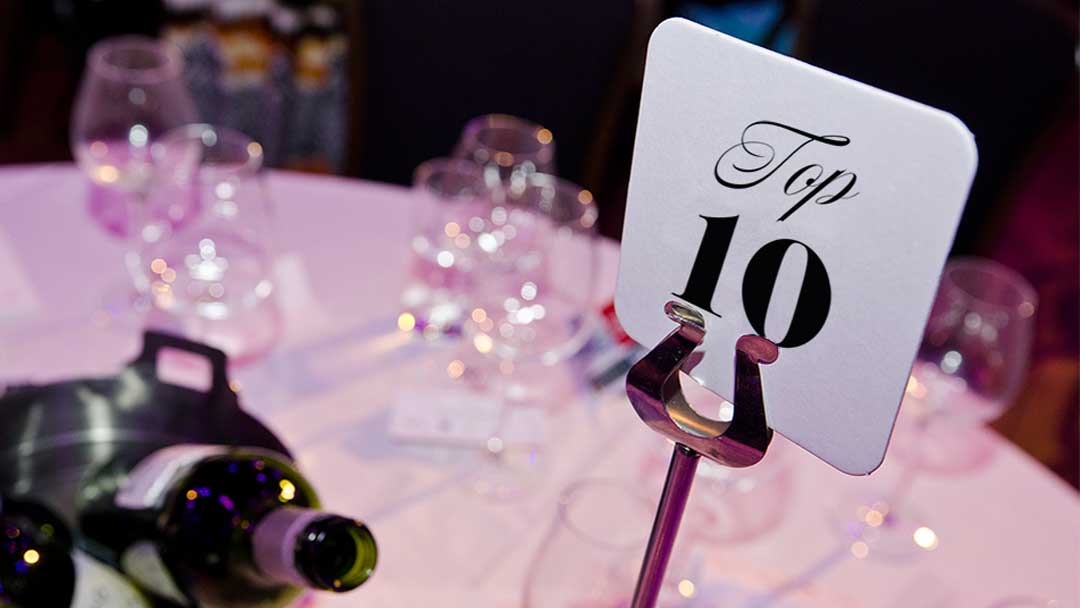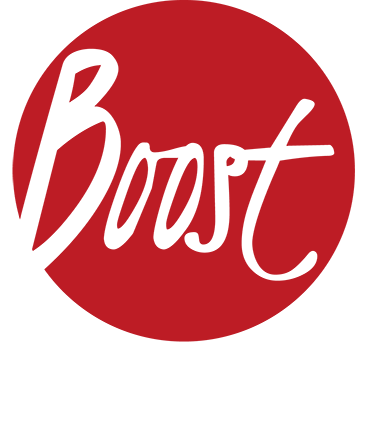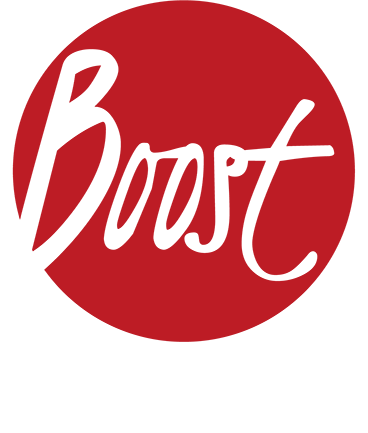US Awards, European Awards, UK Awards – The Key Differences

Chris Robinson
Founder & MD, Boost
The global awards industry and the culture of awards
Research conducted by our team at Boost Awards demonstrated that the awards industry is becoming an increasingly global marketplace, and the days where people focused entirely on their national award schemes has passed. Yes, companies do still focus on the awards for their home city or country, but they are increasingly shopping around – and two countries in particular appear to be considered particularly credible globally – the UK and the US.
In this article I hope to be able to help those who are considering shopping around for awards to enter, and identify the main differences between US Awards, European Awards and Awards in the UK. I’ll also be touching upon any other factors you should be considering when planning which awards to enter.
Difference 1: The number of categories and winners
In the USA, the geography is a major problem for the awards dinner. Yes, many schemes do have an event in Las Vegas, New York, etc – but how do you get people to travel across the United States for an awards dinner where they might have a one in five chance of winning? The answer is – change the maths.
European awards tend to have 10-20 categories and three to eight finalists per category – so 30-160 finalists. If each finalist books an average of eight seats at the dinner (which is optimistic), then this means a maximum of 1,280 guests – perfect for the biggest venues like the Marriott Grosvenor House in London.
If you apply this formula to a country where it’s only affordable to fly and accommodate an average of one or two people per finalist, with many unlikely to travel at all, you need a different format: offer over 100 categories, multiple gold, silver and bronze winners, and invite winners to the dinner to receive or find out the colour of their award. Consider the maths: 100 categories times five award winners per category, times one delegate on average, equals a viable awards dinner. Some awards even offer the opportunity to make a speech to camera and audience as an incentive. Getting them all to make a speech to camera isn’t so easy, so this has to be in batches.
What does this mean to you, the award applicant? Well, US Awards are still credible as they tend to attract thousands of applicants from around the world. Despite this popularity, they are also much more ‘winnable’. With that in mind, it’s wise to include a mixture of US-based international awards in your plan along with the more competitive national awards – especially, of course, if you are based in America.
Does this mean you have to go to the dinner? We’d always recommend going along if you can, so you get ‘that photo’ and the networking opportunities, but you don’t have to. Many schemes allow you to pay a fee to receive a trophy (and possibly also duplicates) by courier.
Examples of international awards which have this format include:
- The International Business Awards (Known as ‘The International Stevies’ or the ‘IBAs’): These popular international awards (July deadline, US-based) have over 300 categories, with one gold, one silver, and multiple bronze awards in each category. Nonetheless, they get thousands of entries each year, so winning isn’t guaranteed.
- The Stevie Awards for Sales & Customer Service: These awards, by the same organisers (January deadline), have over 200 categories and a similar format.
- The Hermes Creative Awards: This international marketing awards scheme (April deadline) has over 100 categories. The same organisers, AMCP, also run The AVA Digital Awards, with an impressive 227 categories.
- The ContactCentreWorld Top Ranking Performers Awards: This programme (end of January deadline) invites entries from all around the world – and has regional awards, culminating in a global award scheme. The entry form is unusually long, but there are gold, silver and bronze awards up for grabs in the 80+ categories.
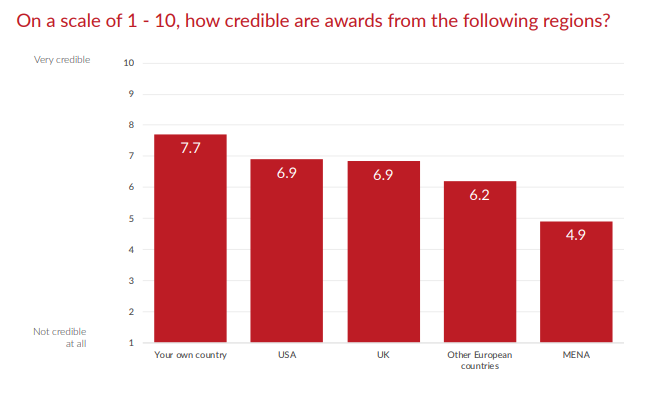
“Based on research by Boost, the most credible award schemes originated in the US and UK, ahead of those in other parts of Europe and in the Middle East. On this basis, it is well worth considering international awards beyond your national boundaries, as a way of saying ‘we have a global mindset.”
- The Brandon Hall Excellence in Human Capital Management Program: This international scheme, one of three by the organisers, was originally set up to target e-learning, but has since diversified to support a wide variety of learning and development schemes. It also has over 100 categories, with multiple gold, silver and bronze awards possible in each category. It is divided between spring and fall programmes, with winners invited to speak at the annual conference.
- The International Financing Review IFR Awards: This highly credible scheme (October deadline) welcomes entries from the international banking sector. It has no less than 50 categories in all, but these categories have awards for all the main regions and many individual countries around the world, so there are a lot up for grabs.
- The Best Trade Finance & Supply Chain Finance Provider Awards (Global Finance): This is another major banking award scheme (November deadline). This time there are about 50 categories, which are multiplied across seven main regions, and then multiplied again by a huge list of country awards, equating to a massive total of possible awards available.
Difference 2: Less content please
In the UK, awards tend to require a written entry (there are voting and ranking schemes, but they are the minority). Usually the word limit varies between 1,000 and 2,000 words, with an uploaded supporting document. Some schemes can require as much as 30,000 words in total and have a beast of an entry form.
For US awards, however, the entry forms require much more succinct entries – typically requiring anywhere from 50 to 700 words, although this is not always the case. This doesn’t necessarily mean entries are easy to pull together. Writing succinct entries is similar, we find, to pulling together lengthy entries, but with a longer stage of paraphrasing at the end. Here are some examples:
- International Business Awards (The International Stevies):The main entry requires just 625 words.
- Best of Elearning! Awards – Nomination process includes a small succinct box to complete, stating why a particular solutions provider is best in class.
- SIIA CODiE Awards – While you have 1,500 words for your product description, your actual nomination for each category is just a maximum of 300 characters.
Some awards, like the Brandon Hall Awards and the ContactCentreWorld Top Ranking Performers Awards have vast entry requirements, but for the most part, US awards tend to have lower word limits than their UK equivalents.
In terms of the judging process, a lot more UK and European awards have a second, face-to-face stage. These are still a minority (about 10% of all awards) but often the most credible awards have this second stage. In the US it is almost unheard of – the short written entry is everything. Again, I suspect this is due to the geographical distances involved.
It is worth noting that the country with the longest entry forms is New Zealand. This is mainly thanks to their popular Westpac Business Excellence Awards setting the trend, which typically requires 20 or so pages of content.
Difference 3: The number of ranking schemes
US award schemes also include numerous rankings, both for general business and ones which are industry specific. In some instances these require an application form to be submitted, while in others the company responsible for the ranking – often a publisher – will undertake their own research to determine the list.
In the former camp are rankings such as the CIO Top 100. Although an international ranking, it is US-based, with most of the CIOs listed coming from the domestic market. It attracts a mix of IT and industry heavyweights, such as Adobe, IBM, Intel, General Motors and J.P.Morgan. Crain’s 40 under 40 is another example of an application-based scheme (fees for entering its 2020 ranking cost $199 per entry). Also aimed at individuals, it is open to New York City-based business professionals under 40 years old.
A third ranking, this time aimed at businesses within the Civil Engineering, Structural Engineering, Environmental Services and Architecture Surveying industries, is Zweigwhite Hot Firm List. Essentially a ranking to identify the fastest-growing North American companies within these sectors, it has a short entry form that requests information relating to turnover and percentage growth rate over a three-year period.
Various rankings, run by Forbes and Fortune, fall into the latter camp – that is to say they are predominantly or exclusively determined by the publisher/media company. These include:

“Angela Merkel was named by Forbes as the World’s Most Powerful Woman in 2019. She did not need to fill in a form!”
In the case of Forbes 30 under 30, those lucky enough to have listed may have self-nominated, been chosen as a result of Forbes’ editorial team’s research, or been nominated by a third party.
Meanwhile, the women’s lists for both Forbes and Fortune are determined by the publications’ respective editorial teams. In Forbes’ case, this sees them apply a set of four criteria – money, media, impact, and spheres of influence, while Fortune looks at the size and importance of the woman’s business in the global economy, the health and direction of the business, the arc of the woman’s career (résumé and runway ahead), and social and cultural influence. Angela Merkel need not fill in a form!
The Fortune 500 and Forbes Global 2000 rankings are both determined by financial data. For Forbes, this means examining the biggest publicly listed companies across four metrics: sales, profits, assets and market value, based on data provided by FactSet Research systems. For Fortune, this means ranking publicly-listed American companies by their sales revenue, as reported for the company’s previous fiscal year. Fortune also boasts a global version of this scheme, The Fortune Global 500.
Free lists of awards in the US and UK
Boost Awards operate the world’s largest free resource of business awards on our two Awards List websites – here you can find over 4,000 awards to enter in the US or UK:
US Awards
North American Awards
Canadian Awards
UK Awards
European Awards
International Business Awards by Industry Sector
Help writing your entry
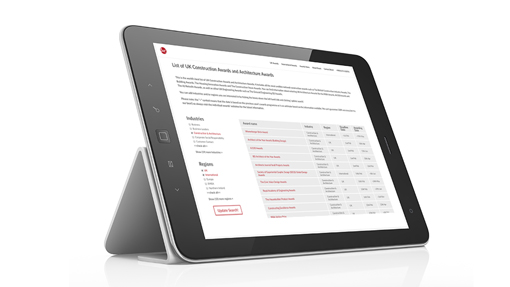
Next steps?
As you can see, there are a whole host of awards out there with a great deal of variation in terms of entry requirements and structure, and this often differs depending on where you are in the world. Add to this the fact that some awards are far more credible or winnable than others, and it can become a complicated choice to decide which awards to enter, both nationally and globally. This is where Boost can help.
We are the world’s first and largest award entry consultancy. We’ve been helping businesses enter awards and win them since 2006 and we are more experienced than any other agency in the world. We have a range of award entry writing services, and importantly we can help you plan which awards to enter to maximise the benefits for your company.
I would be happy to give you a call to help you double check your chances of success and explain our pricing options. You can contact Boost via our contact form or email me directly via chris.robinson@boost-awards.co.uk
I look forward to hearing from you and helping you win awards.
Chris.
(C) This article was written by Chris Robinson and is the intellectual property of award entry consultants Boost Awards
Looking for awards to enter?
Sign up for our free email deadline reminders to make sure you never miss an awards deadline. Every month you will receive a comprehensive list of upcoming awards deadlines (in the next two months) organised by industry sector.
US Awards, European Awards, UK Awards – The Key Differences

Chris Robinson
Founder & MD, Boost
The global awards industry and the culture of awards
Research conducted by our team at Boost Awards demonstrated that the awards industry is becoming an increasingly global marketplace, and the days where people focused entirely on their national award schemes has passed. Yes, companies do still focus on the awards for their home city or country, but they are increasingly shopping around – and two countries in particular appear to be considered particularly credible globally – the UK and the US.
In this article I hope to be able to help those who are considering shopping around for awards to enter, and identify the main differences between US Awards, European Awards and Awards in the UK. I’ll also be touching upon any other factors you should be considering when planning which awards to enter.
Difference 1: The number of categories and winners
In the USA, the geography is a major problem for the awards dinner. Yes, many schemes do have an event in Las Vegas, New York, etc – but how do you get people to travel across the United States for an awards dinner where they might have a one in five chance of winning? The answer is – change the maths.
European awards tend to have 10-20 categories and three to eight finalists per category – so 30-160 finalists. If each finalist books an average of eight seats at the dinner (which is optimistic), then this means a maximum of 1,280 guests – perfect for the biggest venues like the Marriott Grosvenor House in London.
If you apply this formula to a country where it’s only affordable to fly and accommodate an average of one or two people per finalist, with many unlikely to travel at all, you need a different format: offer over 100 categories, multiple gold, silver and bronze winners, and invite winners to the dinner to receive or find out the colour of their award. Consider the maths: 100 categories times five award winners per category, times one delegate on average, equals a viable awards dinner. Some awards even offer the opportunity to make a speech to camera and audience as an incentive. Getting them all to make a speech to camera isn’t so easy, so this has to be in batches.
What does this mean to you, the award applicant? Well, US Awards are still credible as they tend to attract thousands of applicants from around the world. Despite this popularity, they are also much more ‘winnable’. With that in mind, it’s wise to include a mixture of US-based international awards in your plan along with the more competitive national awards – especially, of course, if you are based in America.
Does this mean you have to go to the dinner? We’d always recommend going along if you can, so you get ‘that photo’ and the networking opportunities, but you don’t have to. Many schemes allow you to pay a fee to receive a trophy (and possibly also duplicates) by courier.
Examples of international awards which have this format include:
- The International Business Awards (Known as ‘The International Stevies’ or the ‘IBAs’): These popular international awards (July deadline, US-based) have over 300 categories, with one gold, one silver, and multiple bronze awards in each category. Nonetheless, they get thousands of entries each year, so winning isn’t guaranteed.
- The Stevie Awards for Sales & Customer Service: These awards, by the same organisers (January deadline), have over 200 categories and a similar format.
- The Hermes Creative Awards: This international marketing awards scheme (April deadline) has over 100 categories. The same organisers, AMCP, also run The AVA Digital Awards, with an impressive 227 categories.
- The ContactCentreWorld Top Ranking Performers Awards: This programme (end of January deadline) invites entries from all around the world – and has regional awards, culminating in a global award scheme. The entry form is unusually long, but there are gold, silver and bronze awards up for grabs in the 80+ categories.

“Based on research by Boost, the most credible award schemes originated in the US and UK, ahead of those in other parts of Europe and in the Middle East. On this basis, it is well worth considering international awards beyond your national boundaries, as a way of saying ‘we have a global mindset.”
- The Brandon Hall Excellence in Human Capital Management Program: This international scheme, one of three by the organisers, was originally set up to target e-learning, but has since diversified to support a wide variety of learning and development schemes. It also has over 100 categories, with multiple gold, silver and bronze awards possible in each category. It is divided between spring and fall programmes, with winners invited to speak at the annual conference.
- The International Financing Review IFR Awards: This highly credible scheme (October deadline) welcomes entries from the international banking sector. It has no less than 50 categories in all, but these categories have awards for all the main regions and many individual countries around the world, so there are a lot up for grabs.
- The Best Trade Finance & Supply Chain Finance Provider Awards (Global Finance): This is another major banking award scheme (November deadline). This time there are about 50 categories, which are multiplied across seven main regions, and then multiplied again by a huge list of country awards, equating to a massive total of possible awards available.
Difference 2: Less content please
In the UK, awards tend to require a written entry (there are voting and ranking schemes, but they are the minority). Usually the word limit varies between 1,000 and 2,000 words, with an uploaded supporting document. Some schemes can require as much as 30,000 words in total and have a beast of an entry form.
For US awards, however, the entry forms require much more succinct entries – typically requiring anywhere from 50 to 700 words, although this is not always the case. This doesn’t necessarily mean entries are easy to pull together. Writing succinct entries is similar, we find, to pulling together lengthy entries, but with a longer stage of paraphrasing at the end. Here are some examples:
- International Business Awards (The International Stevies):The main entry requires just 625 words.
- Best of Elearning! Awards – Nomination process includes a small succinct box to complete, stating why a particular solutions provider is best in class.
- SIIA CODiE Awards – While you have 1,500 words for your product description, your actual nomination for each category is just a maximum of 300 characters.
Some awards, like the Brandon Hall Awards and the ContactCentreWorld Top Ranking Performers Awards have vast entry requirements, but for the most part, US awards tend to have lower word limits than their UK equivalents.
In terms of the judging process, a lot more UK and European awards have a second, face-to-face stage. These are still a minority (about 10% of all awards) but often the most credible awards have this second stage. In the US it is almost unheard of – the short written entry is everything. Again, I suspect this is due to the geographical distances involved.
It is worth noting that the country with the longest entry forms is New Zealand. This is mainly thanks to their popular Westpac Business Excellence Awards setting the trend, which typically requires 20 or so pages of content.
Difference 3: The number of ranking schemes
US award schemes also include numerous rankings, both for general business and ones which are industry specific. In some instances these require an application form to be submitted, while in others the company responsible for the ranking – often a publisher – will undertake their own research to determine the list.
In the former camp are rankings such as the CIO Top 100. Although an international ranking, it is US-based, with most of the CIOs listed coming from the domestic market. It attracts a mix of IT and industry heavyweights, such as Adobe, IBM, Intel, General Motors and J.P.Morgan. Crain’s 40 under 40 is another example of an application-based scheme (fees for entering its 2020 ranking cost $199 per entry). Also aimed at individuals, it is open to New York City-based business professionals under 40 years old.
A third ranking, this time aimed at businesses within the Civil Engineering, Structural Engineering, Environmental Services and Architecture Surveying industries, is Zweigwhite Hot Firm List. Essentially a ranking to identify the fastest-growing North American companies within these sectors, it has a short entry form that requests information relating to turnover and percentage growth rate over a three-year period.
Various rankings, run by Forbes and Fortune, fall into the latter camp – that is to say they are predominantly or exclusively determined by the publisher/media company. These include:

“Angela Merkel was named by Forbes as the World’s Most Powerful Woman in 2019. She did not need to fill in a form!”
In the case of Forbes 30 under 30, those lucky enough to have listed may have self-nominated, been chosen as a result of Forbes’ editorial team’s research, or been nominated by a third party.
Meanwhile, the women’s lists for both Forbes and Fortune are determined by the publications’ respective editorial teams. In Forbes’ case, this sees them apply a set of four criteria – money, media, impact, and spheres of influence, while Fortune looks at the size and importance of the woman’s business in the global economy, the health and direction of the business, the arc of the woman’s career (résumé and runway ahead), and social and cultural influence. Angela Merkel need not fill in a form!
The Fortune 500 and Forbes Global 2000 rankings are both determined by financial data. For Forbes, this means examining the biggest publicly listed companies across four metrics: sales, profits, assets and market value, based on data provided by FactSet Research systems. For Fortune, this means ranking publicly-listed American companies by their sales revenue, as reported for the company’s previous fiscal year. Fortune also boasts a global version of this scheme, The Fortune Global 500.
Free lists of awards in the US and UK
Boost Awards operate the world’s largest free resource of business awards on our two Awards List websites – here you can find over 4,000 awards to enter in the US or UK:
US Awards
North American Awards
Canadian Awards
UK Awards
European Awards
International Business Awards by Industry Sector
Help writing your entry

Next steps?
As you can see, there are a whole host of awards out there with a great deal of variation in terms of entry requirements and structure, and this often differs depending on where you are in the world. Add to this the fact that some awards are far more credible or winnable than others, and it can become a complicated choice to decide which awards to enter, both nationally and globally. This is where Boost can help.
We are the world’s first and largest award entry consultancy. We’ve been helping businesses enter awards and win them since 2006 and we are more experienced than any other agency in the world. We have a range of award entry writing services, and importantly we can help you plan which awards to enter to maximise the benefits for your company.
I would be happy to give you a call to help you double check your chances of success and explain our pricing options. You can contact Boost via our contact form or email me directly via chris.robinson@boost-awards.co.uk
I look forward to hearing from you and helping you win awards.
Chris.
(C) This article was written by Chris Robinson and is the intellectual property of award entry consultants Boost Awards
Looking for awards to enter?
Sign up for our free email deadline reminders to make sure you never miss an awards deadline. Every month you will receive a comprehensive list of upcoming awards deadlines (in the next two months) organised by industry sector.


